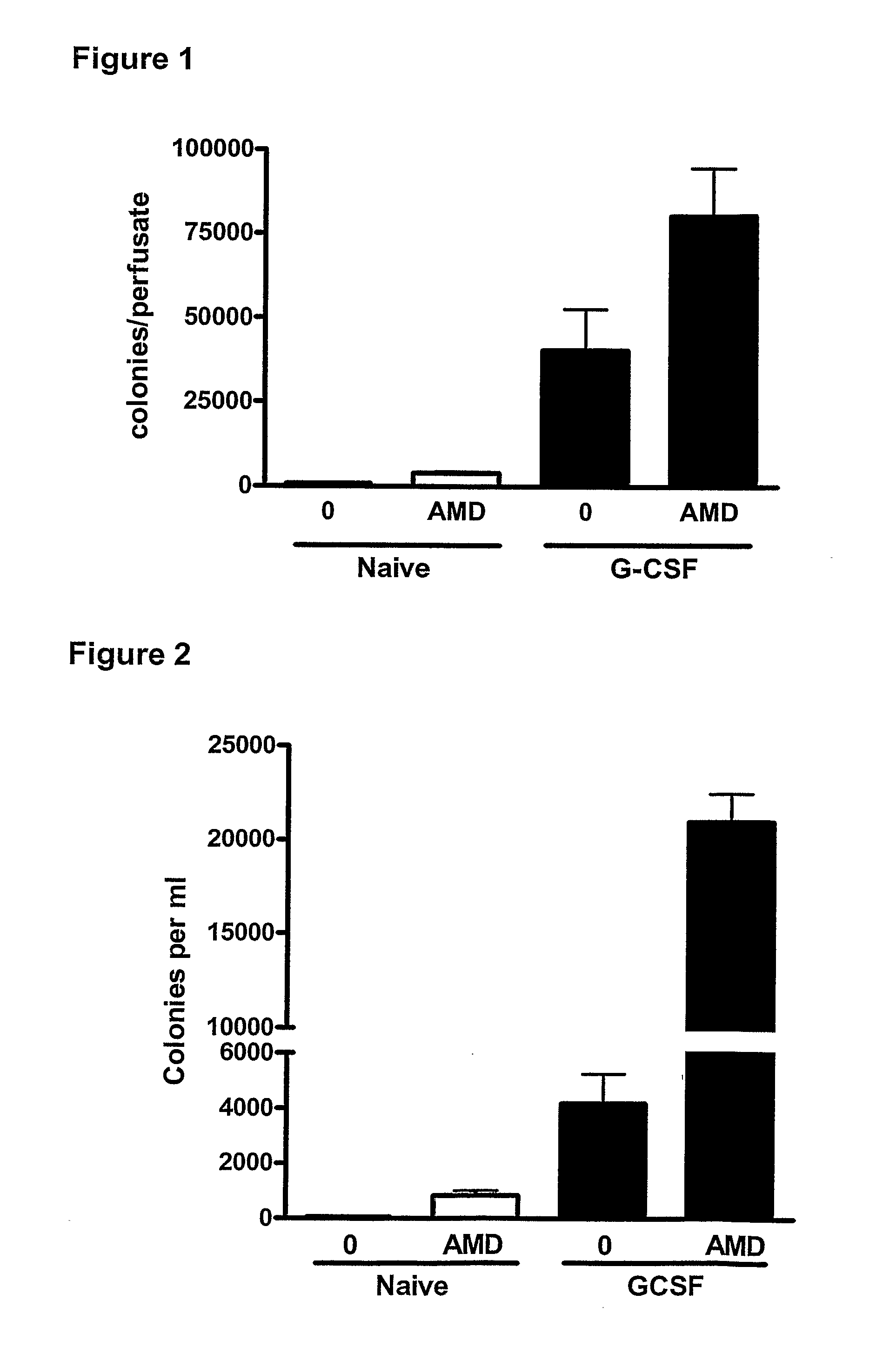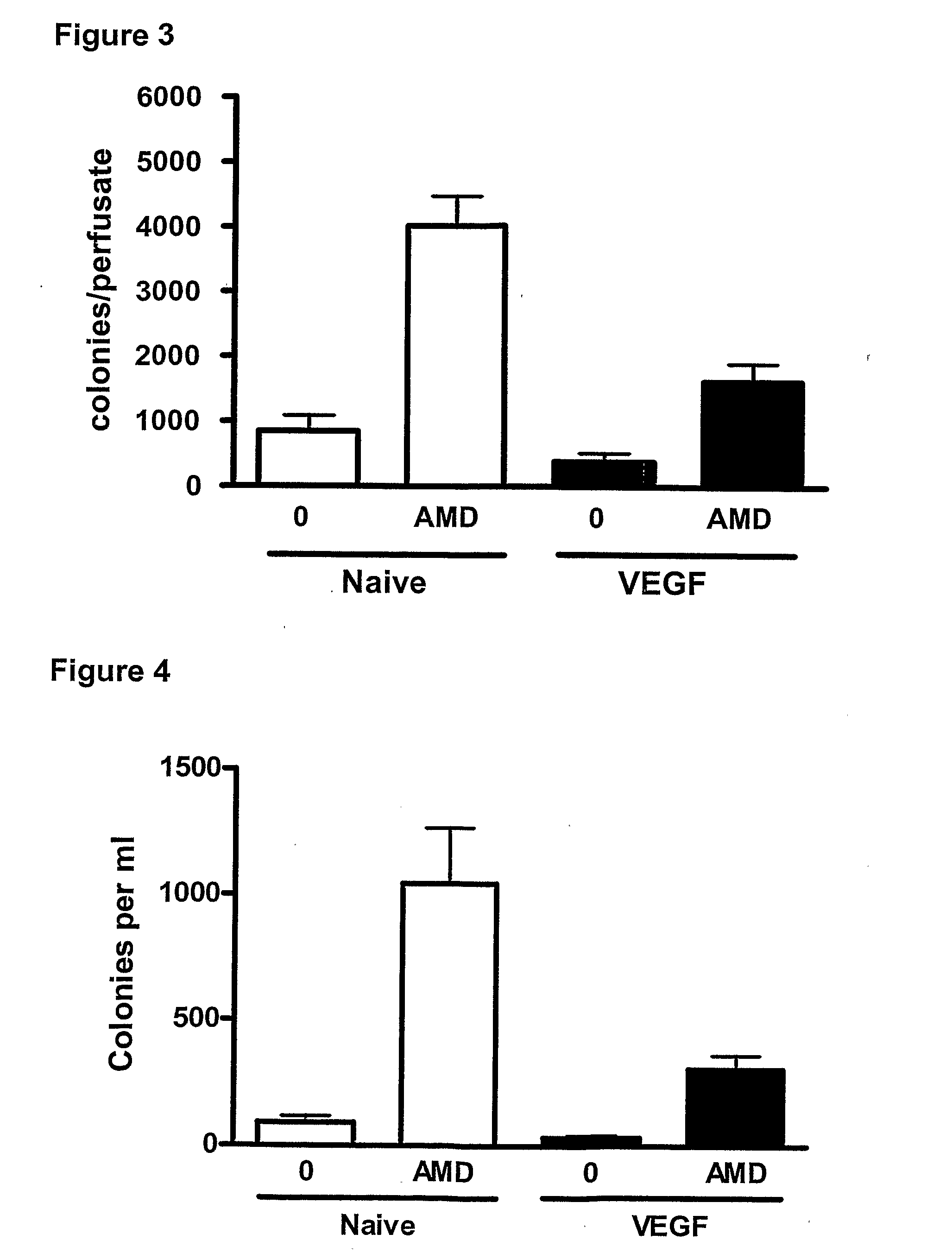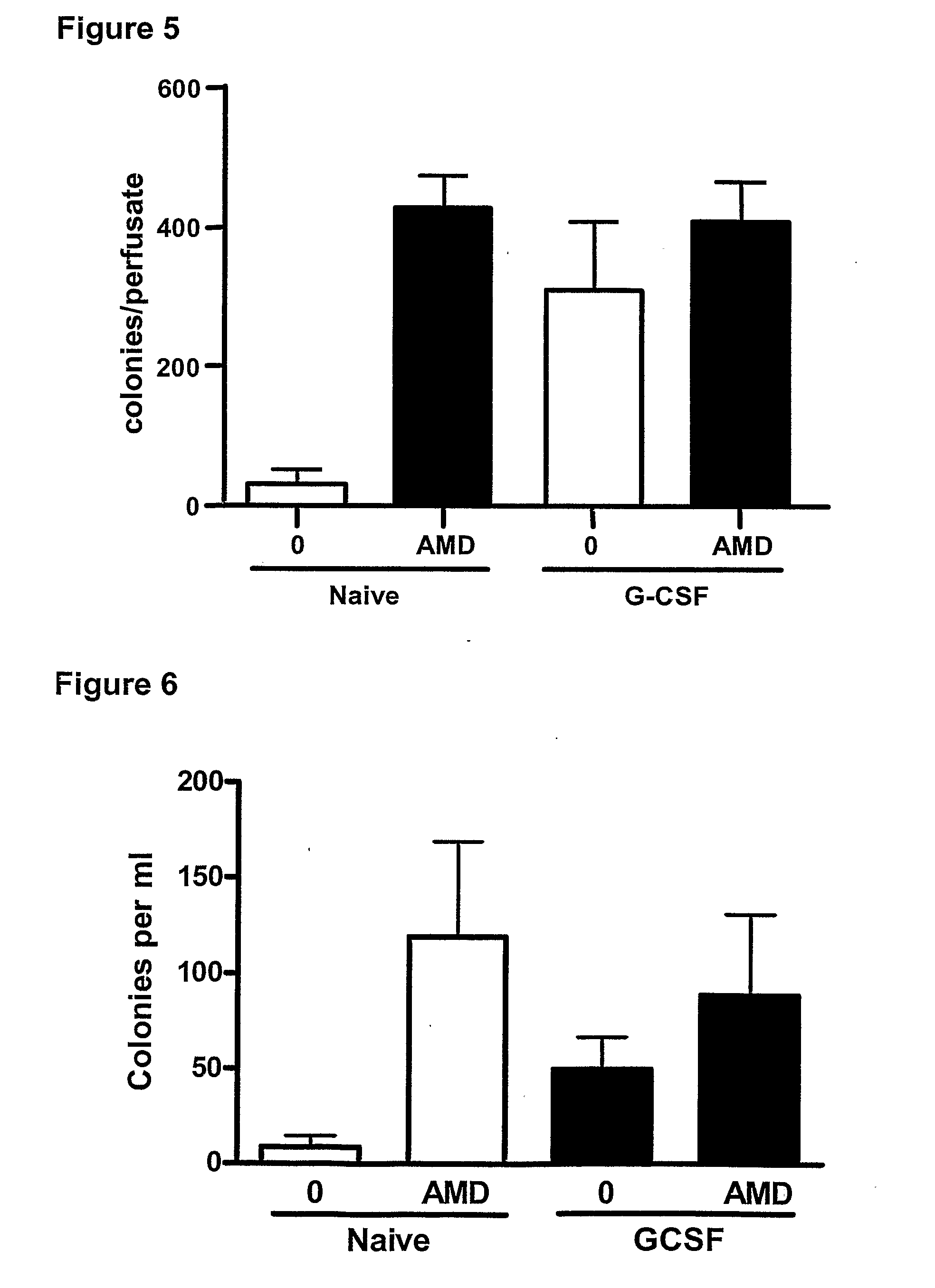Methods
a technology of stem cell mobilization and method, applied in the field of methods, can solve the problems of difficult to interpret the previous and on-going trials using g-csf to mobilize stem cells, unwidespread acceptance, and disappointing studies
- Summary
- Abstract
- Description
- Claims
- Application Information
AI Technical Summary
Benefits of technology
Problems solved by technology
Method used
Image
Examples
example 1
Effect of a CXCR4 Antagonist in Combination with Either G-CSF or VEGF on Mobilisation of HPC, EPC and MSC In Vivo
[0129]Methodology
[0130]Chronic Pre-Treatment with G-CSF or VEGF.
[0131]Female BALB / c mice were given a subcutaneous injection of vascular endothelial growth factor (VEGF, 2.5 μg / mouse, Peprotech 450-32), Granulocyte-colony stimulating factor (G-CSF, 2.5 μg / mouse, Peprotech 250-05) or vehicle on 4 consecutive days. 24 hours after the last injection, mice were administered a CXCR4 antagonist (AMD3100, 5 mg / kg i.p), or vehicle and blood was collected via cardiac puncture 1 hour later for enumeration of circulating leukocyte, HPC, EPC and MSC levels. In other experiments, mice pre-treated with G-CSF or VEGF were used for in situ perfusion of the mouse hind limb as explained below.
[0132]In Situ Perfusion of Mouse Hind Limb
[0133]On day 5, mice were anaesthetized with urethane (25% 0.2 ml i.p.) and the femoral artery and vein exposed. The hind limb was isolated by occlusion of t...
example 2
[0165]A patient in need of mobilisation of MSCs or ESCs in order to repair injured tissue may be administered VEGF daily subcutaneously for 3-5 days, followed by administration subcutaneously of a single dose of a CXCR4 antagonist such as AMD3100. The mobilised cells can be harvested and then returned to the site of injury in the patient or can be allowed naturally to home to the site of injury.
example 3
Differential Mobilization of Subsets of Progenitor Cells from the Bone Marrow
[0166]Introduction
[0167]The bone marrow is a reservoir of progenitor cells, including haematopoietic progenitor cells (HPCs), fibrocytes, mesenchymal stem cells (MSCs) and endothelial progenitor cells (EPCs). In response to disease or tissue injury these cells are mobilized from the bone marrow and recruited into tissues where they contribute either to disease progression or tissue repair (Takahashi et al., 1999; Orlic et al., 2001; Rankin 2008). Thus, for example, fibrocyte recruitment detrimentally contributes to fibrosis and tissue remodelling in diseases such as idiopathic lung fibrosis and ischemic cardiomyopathy (Philips et al., 2004; Haudek et al., 2006). In contrast, EPCs recruited into ischemic tissues promote angiogenesis and thereby contribute to tissue regeneration (Asahara et al., 1997; 1999; Takahashi et al., 1999; Nolan et al., 2008). Further, the identity of an EPC type, which is distinct f...
PUM
| Property | Measurement | Unit |
|---|---|---|
| time | aaaaa | aaaaa |
| time | aaaaa | aaaaa |
| concentration | aaaaa | aaaaa |
Abstract
Description
Claims
Application Information
 Login to View More
Login to View More - R&D
- Intellectual Property
- Life Sciences
- Materials
- Tech Scout
- Unparalleled Data Quality
- Higher Quality Content
- 60% Fewer Hallucinations
Browse by: Latest US Patents, China's latest patents, Technical Efficacy Thesaurus, Application Domain, Technology Topic, Popular Technical Reports.
© 2025 PatSnap. All rights reserved.Legal|Privacy policy|Modern Slavery Act Transparency Statement|Sitemap|About US| Contact US: help@patsnap.com



